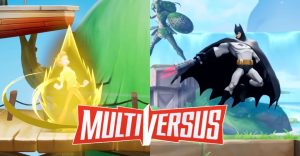DC Accidentally Reveals Green Lantern’s New Fatal Flaw

WARNING: Spoilers for the Are You Afraid of Darkseid? Halloween special
In the DC Comics mythos, the universe of the Green Lantern Corps is a fan-favorite, but one new short story highlights the greatest weakness – and the greatest strength – of the Green Lantern mythos. Like most comic book properties, Green Lantern has gone through many iterations with varying degrees of popularity. Not every period will be a fan-favorite, but every era has its supporters, and the most popular Lantern runs typically focus on building the mythos up rather than tearing it down.
With the new galactic status quo developing in Infinite Frontier, this feels like the perfect time for the Corps to navigate their new place in this changing universe. Instead, the majority of the Green Lanterns are once again stranded without their rings, with many fan-favorites like Arisia unceremoniously killed off for shock value. Green Lanterns work best when they’re building to something new, and Dave Wielgosz and Pablo M. Collar’s “Escape the Dark Fortress” short story in the Are You Afraid of Darkseid? special proves reminds readers just how true that is.
In the short, Green Lantern helps a cosmic haunted house overcome an existential crisis and essentially inducts it into the Green Lantern Corps for good measure. While this may seem like a fun cosmic haunted house story, it effectively demonstrates what fans love about the Green Lanterns and even highlights why the current Green Lantern era hasn’t been landing incredibly well with established fans. After all, Green Lanterns thrive when they’re moving forward, which is reinforced by the way that John Stewart recruits the dark fortress to the Corps – by looking past what they’ve lost and focusing on what they can create together.

At this point, readers have seen the Green Lantern Corps depowered, scattered, and hunted more than a few times in the last decade, even before the destruction of the Central Power Battery in the ongoing Green Lantern run by Geoffrey Thorne and company. Because of the Corps’ constant cycle of death and rebirth over the last few years, the concept of breaking the Lanterns down just doesn’t feel as impactful and intriguing as the concept of building them outward.
One of the major appeals of Green Lantern lore is the concept that anything can become a Green Lantern, so long as it demonstrates the willpower necessary. As a storytelling tool, this has led to dozens of fan-favorite Lanterns from beings like Mogo, the sentient Green Lantern planet created by Alan Moore and Dave Gibbons, to fan-favorite Green Lantern squirrels like Ch’p and B’dg. Likewise, Grant Morrison and Liam Sharp’s recent series, The Green Lantern, was lauded for its introduction of so many new Green Lanterns – including a sentient volcano.

Beyond the introduction of new Lanterns, the Green Lantern mythos is one that thrives from constant creation. During Geoff Johns’ years-long run, the introduction of concepts like the Emotional Spectrum and its corresponding entities reinvigorated the franchise and made it one of DC’s best-selling titles for years. Even though tearing down established lore is a classic comic book storytelling trope, it’s rarely received as well by fans as building something new, and the history of Green Lantern proves it.
Unfortunately, while it may initially seem like an opportunity for creators to put their own spin on fan-favorite mythos, this trope frequently alienates readers and sours the experience for followers. While it’s important for DC Comics’ writers and artists not to focus solely on what came before, doing away with a series’ history entirely rarely satisfies most readers. When it comes to the Green Lantern Corps, they’re one DC Comics property that works best when shining a light on the future, and they’ve got 7,200 Green Lanterns to prove it.
About The Author

















